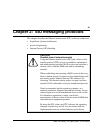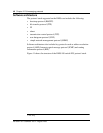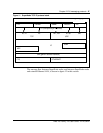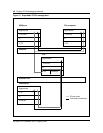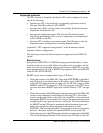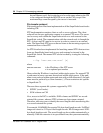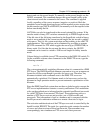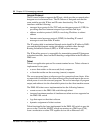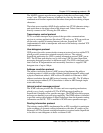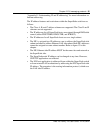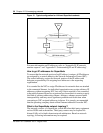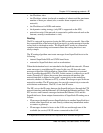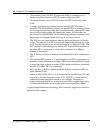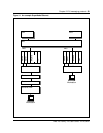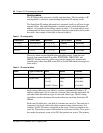
Chapter 2: EIU messaging protocols 53
DMS-100 Family EIU User Guide TELECOM12
The MAPCI supports asynchronous output to both the scroll area and a “full
screen” area. The input, however, is buffered in a line-by-line mode. This
combination of features requires that the telnet client perform echoing of input
characters.
The telnet server translates MAP display updates into VT100 character strings
and sends them to the telnet client at the remote end. Telnet clients must
directly connect to the CM using the CM address.
Transmission control protocol
TCP is a reliable transport layer protocol that provides communications
services to various applications like telnet, FTP, and so on. TCP can reside on
all the nodes capable of running Internet software. SuperNode TCP
implementation is able to interoperate with most of the industry-standard TCP
implementations.
User datagram protocol
UDP protocol provides connectionless transport protocol services unlike TCP,
which provides connection-oriented transport services. The original
SuperNode application for UDP is routing information protocol (RIP) on an
EIU. The IP route path display tool is also using UDP for intra-SuperNode
messaging between processes on different nodes. The UDP is designed such
that it can use IP fragmentation and reassembly functions to support UDP
datagram size of up to 4 kbyte.
Address resolution protocol
The address resolution protocol (ARP) protocol implements the address
resolution protocol, which provides dynamic binding between IP address and
a physical hardware address. ARP resolves IP address-to-Ethernet or MAC
address translation through ARP protocol running on an EIU. The IP address
to frame transport address (FTA) translation is done in ARP through simple
static table lookup.
Internet control message protocol
The ICMP software provides the IP status and error-reporting mechanism,
which is very closely coupled to IP. The ICMP messages handling in
SuperNode is limited to a few specific messages. The ICMP echo and response
messages are handled to provide ping capability. The ICMP redirect is handled
to provide routing table updates to SuperNode hosts from the dynamic routing
information on the EIU. TCP is notified of ICMP source quench messages.
Routing information protocol
The industry standard RIP is implemented for an EIU to enable it to participate
in the exchange of dynamic routing information with other IP routers on the
Ethernet LAN. The dynamic routing information is required on the SuperNode
to be able to route datagrams to hosts on distant LANs.



